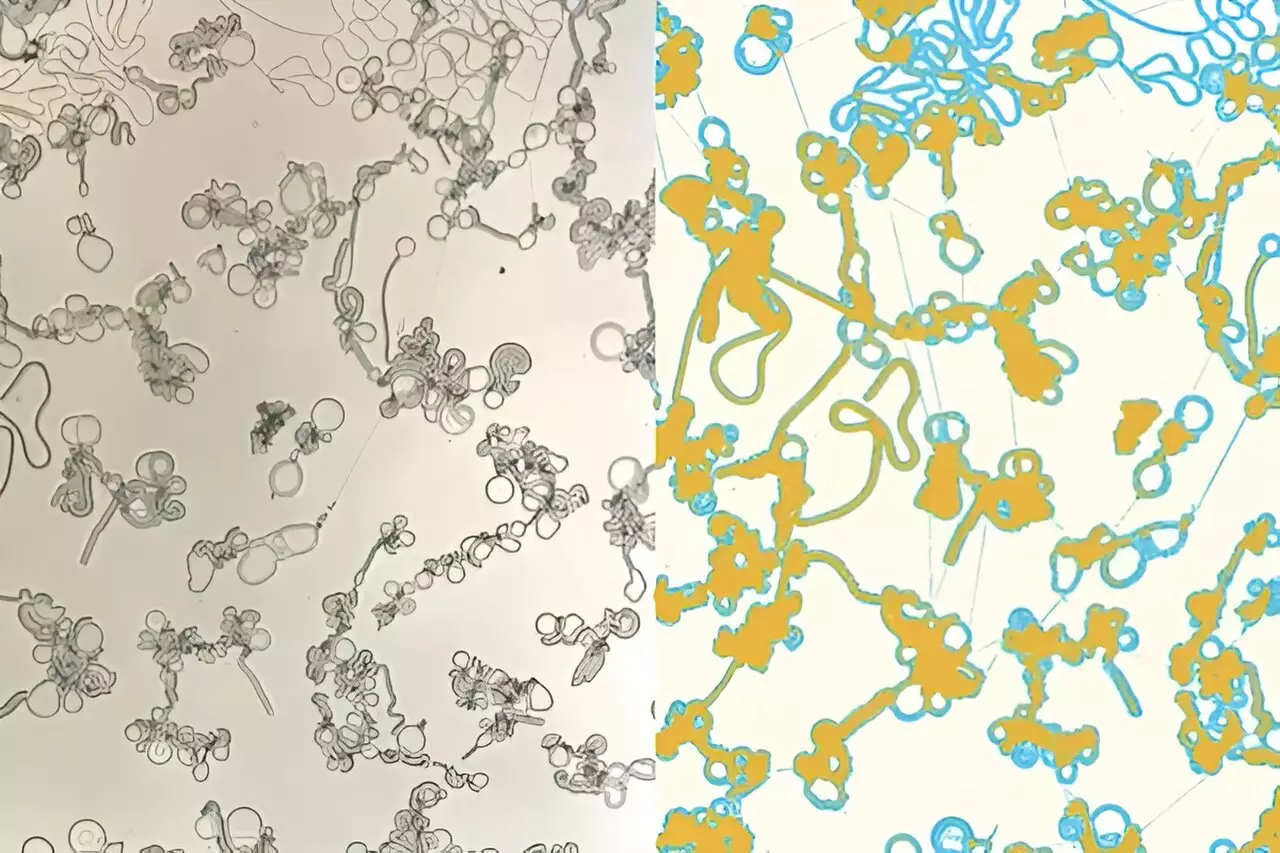Liquid crystals, often associated with the screens of our electronic devices, are much more intricate than merely serving as visual displays. Recent research conducted by an interdisciplinary team at the University of Pennsylvania has unveiled a captivating dimension of these materials—one that suggests they can self-organize into complex structures, mimicking behaviors often seen in biological systems. This article delves into the findings led by Professor Chinedum Osuji and his colleagues, exploring both the scientific principles involved and their broader implications for technology and biology.
Typically characterized by their unique properties, liquid crystals exist in a state between liquids and solids. They can flow like a liquid while maintaining a certain order like a solid. This fascinating combination allows them to manipulate light in specific ways, which is why they are extensively used in liquid crystal displays (LCDs). However, researchers are just beginning to scratch the surface of their potential applications beyond mere visualization.
The recent findings from Osuji’s lab reveal that under certain conditions, these molecules can transform into self-organizing structures that function similarly to biological systems. This occurs when electric currents are passed through the liquid crystals, causing them to rearrange and generate colors based on the wavelengths of light they reflect. This begins to suggest a complex network of interactions that could be utilized for advanced materials and systems.
The research stemmed from an ongoing collaboration with ExxonMobil aimed at understanding mesophase pitch, a material vital for creating high-strength carbon fibers. By experimenting with different temperatures, the researchers observed unexpected behavior when two immiscible fluids were combined—specifically, a liquid crystal called 12OCB and squalane, a colorless oil.
Instead of the anticipated droplet formation typical of demixing processes, the liquid crystal self-assembled into irregular filamentous structures and flat disks. Such emergent properties were contrary to the norms established in liquid material science, provoking a reevaluation of existing theories about phase separation and material behavior.
To further investigate these findings, the team employed advanced microscopy techniques, allowing them to visualize phenomena at the micrometer scale—crucial for understanding how these structures developed. By observing the behavior of the liquid crystals under varying cooling rates, they discovered that manipulating these conditions revealed patterns resembling biological processes.
This serendipitous observation helps bridge multiple research disciplines, including active matter research, which investigates the dynamics of living systems, and self-assembly phenomena, where materials create structured forms independently. The implications are substantial; combining insights from these traditionally separate fields could lead to breakthroughs in material science, biophysics, and engineering.
The ability of liquid crystals to self-organize into filamentous and disk-like structures has tantalizing possibilities for scientific development. For instance, the filaments could serve as transport vehicles for molecules, akin to how biological systems shuttle nutrients or signals. This self-assembly could pave the way for innovative research in the development of biomimetic materials, which emulate natural processes for practical applications in medicine or environmental technology.
Moreover, the exploration of these behaviors revitalizes discussion surrounding the research of liquid crystals themselves. As fields become industrialized, fundamental research often wanes; however, the new findings could inspire renewed interest in the study of liquid crystalline materials and their potential applications.
The investigation led by Professor Osuji’s team represents an exciting frontier in materials research. By shedding light on the unexpected abilities of liquid crystals to form complex structures, they are opening doors to a multidisciplinary dialogue that spans physics, biology, and engineering. The potential to develop self-assembling materials that can replicate biological functions may not only revolutionize material science but also enhance our understanding of natural systems. As research continues, liquid crystals could redefine the landscape of how we utilize materials, blending technology with nature’s inherent ingenuity.

